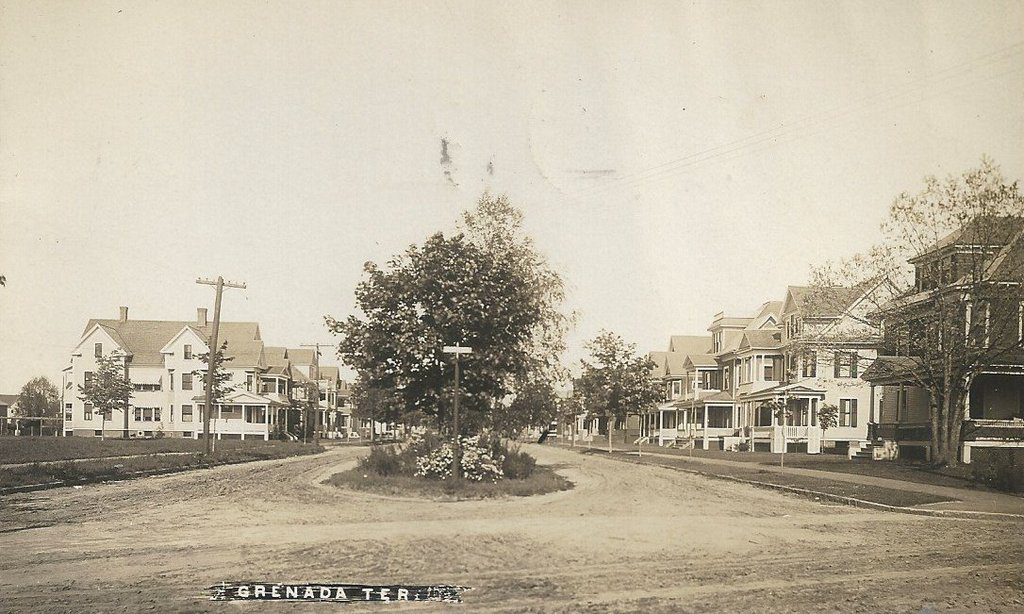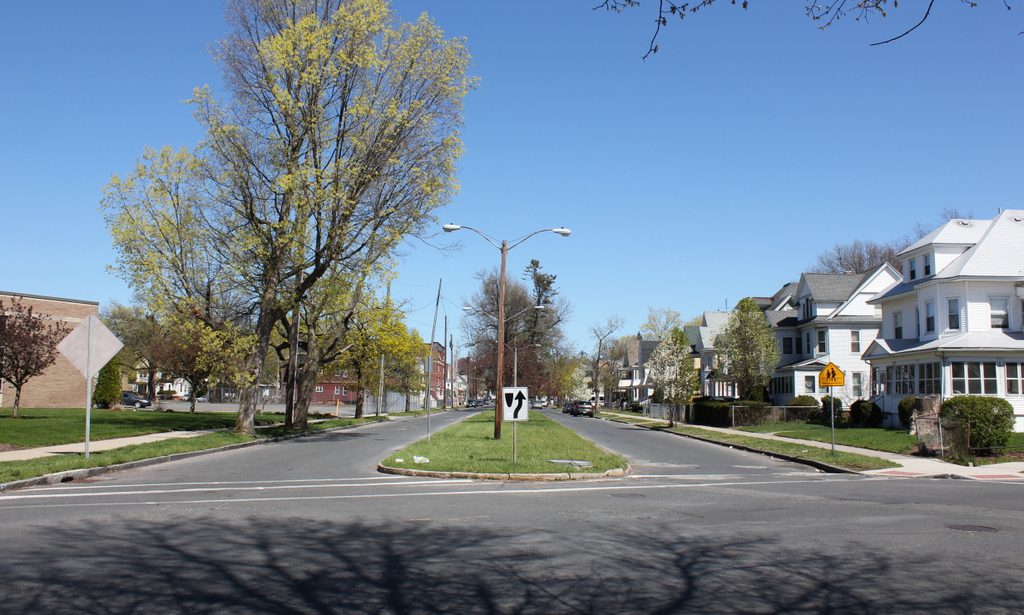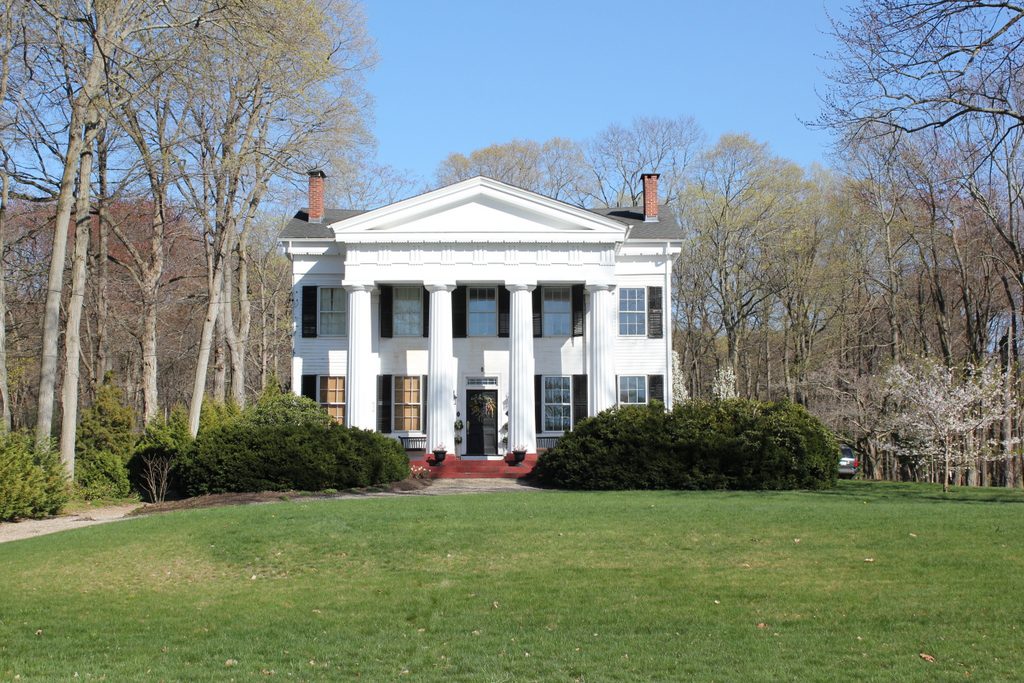Looking east on Grenada Terrace from Dickinson Street in Springfield, sometime in the early 1900s. Image courtesy of Jim Boone.
The scene in 2017:
The Forest Park neighborhood of Springfield was very sparsely developed up until the 1890s, when trolley lines were built through the area, providing a direct connection to downtown Springfield. This section of Forest Park, just to the northeast of the “X”, was developed by the Sumner Avenue Heights Company, and featured streets with names associated with warm climates, such as Ventura, Sorrento, and Pomona. The centerpiece of this development was Grenada Terrace, which was built parallel to Sumner Avenue and featured a wide street with a landscaped median.
The street itself was laid out by the late 1890s, but none of the houses were built until the first decade of the 20th century. Nearly all of the homes had been completed by 1910, and the first photo was probably taken around this time. Most of these homes were owner-occupied, and the 1910 census shows residents with a wide range of middle-class professions, including a clerk, contractor, building inspector, stenographer, traveling salesman, and an Armory employee.
A century later, nearly all of these homes are still standing, although most have been altered with modern changes such as enclosed porches and artificial siding. Two brick apartment buildings, visible in the distant left of the 2017 photo, were built in the 1910s, but the neighborhood remains predominantly single-family, two-family, and three-family homes. Otherwise, the only significant change to this scene is the left side, where four of the homes were demolished to make a parking lot for the Holy Name Church, which is partially visible on the far left.




